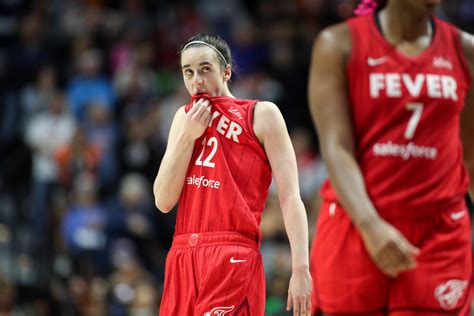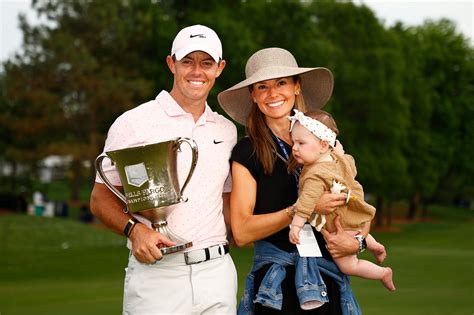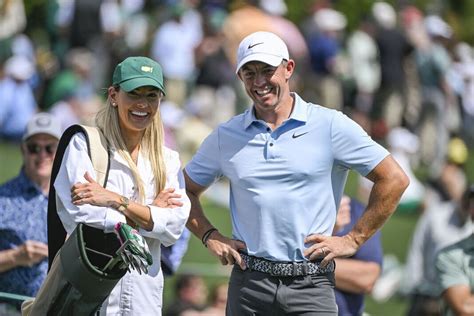
Caitlin Clark’s transition to the WNBA is facing increased scrutiny, with some observers questioning whether the mounting pressure and intense physicality are becoming overwhelming for the Indiana Fever rookie, sparking discussions about her long-term future in the league.
The early stages of Caitlin Clark’s WNBA career have been marked by a level of attention rarely seen for a rookie, but the intense spotlight has also brought forth concerns regarding the physical and mental toll on the young star. Speculation is growing about whether the constant pressure and aggressive play are becoming too much for Clark, leading to broader discussions about her future in professional basketball.
From the moment she was drafted first overall by the Indiana Fever, Clark’s every move has been dissected and analyzed. Her collegiate success at Iowa, where she shattered scoring records and captivated audiences, created sky-high expectations for her entry into the WNBA. However, the transition hasn’t been seamless. While Clark has shown flashes of brilliance, she has also struggled with consistency, turnovers, and the heightened physicality of the professional game.
The increased scrutiny is multifaceted, stemming not only from her on-court performance but also from the broader implications of her presence in the league. Clark’s arrival has undeniably boosted the WNBA’s popularity, drawing in new fans, increased television ratings, and significant sponsorship deals. This heightened visibility, while positive for the league, has simultaneously placed immense pressure on Clark to perform at an elite level immediately.
“There’s growing pushback on Caitlin Clark, that it’s unfair what she’s going through,” Yahoo Sports’ Dan Wetzel noted, highlighting a sentiment echoed by many observers.
One of the primary concerns revolves around the physicality of the WNBA game. Clark, accustomed to the college game’s rules and officiating, has faced a noticeable increase in aggressive defense. Opponents have been physical with her, often employing tactics that some observers feel border on excessive. This has led to discussions about whether Clark is receiving adequate protection from referees and whether the league is inadvertently allowing a culture of overly aggressive play against her.
Furthermore, the mental toll of constant media attention and public scrutiny cannot be understated. Clark’s every game, practice, and public appearance is documented and analyzed, leaving little room for error or personal privacy. The pressure to live up to the hype, coupled with the challenges of adapting to a new league and a demanding schedule, can be mentally exhausting for any player, let alone a 22-year-old rookie.
Adding to the complexity is the racial dynamic at play. As a white player entering a predominantly Black league, Clark’s rapid rise to fame has sparked conversations about race, privilege, and representation in sports. Some critics argue that Clark’s marketing and promotion have overshadowed the accomplishments of other deserving players, while others defend her success as a product of her talent and marketability. These discussions, while important, further contribute to the pressure on Clark, who is often placed in the unenviable position of having to navigate complex social and political issues.
The Indiana Fever’s struggles as a team have also amplified the pressure on Clark. The Fever, who haven’t made the playoffs since 2016, were hoping that Clark’s arrival would turn them into immediate contenders. However, the team has faced challenges in integrating Clark into their system and developing the necessary chemistry to compete at a high level. As a result, Clark often faces double teams and aggressive defensive schemes, making it difficult for her to find open shots and create scoring opportunities.
“I think it’s very, very hard on her and she’s not getting a lot of calls,” Wetzel added, pointing to the officiating concerns that many fans and analysts share.
The discussions about Clark’s future in the WNBA are not necessarily suggesting that she will leave the league prematurely. Rather, they reflect a growing concern about the sustainability of the current environment and the potential long-term impact on her physical and mental health. Some observers have suggested that the league needs to do more to protect Clark from excessive physicality and ensure that she is given the space to develop and thrive. Others have called for a more balanced media narrative that acknowledges the challenges she faces while also celebrating her accomplishments.
The situation also raises broader questions about the expectations placed on young athletes in professional sports. The pressure to perform at an elite level from a young age, coupled with the intense scrutiny of social media and the 24/7 news cycle, can be overwhelming for any athlete. It is essential for leagues, teams, and media organizations to be mindful of the potential impact on athletes’ well-being and to create a supportive environment that allows them to develop and thrive both on and off the court.
Ultimately, Caitlin Clark’s success in the WNBA will depend on a variety of factors, including her ability to adapt to the physicality of the game, her team’s ability to support her, and the league’s willingness to address the concerns about excessive aggression and media scrutiny. While the challenges are undeniable, Clark’s talent and resilience suggest that she has the potential to overcome these obstacles and become a dominant force in the league for years to come. The conversations surrounding her early career serve as a crucial reminder of the complexities and pressures faced by young athletes in the modern sports landscape.
The debate continues to evolve as Clark navigates her rookie season. Whether the pressure is truly “too much” remains to be seen, but the concerns are real and warrant careful consideration. The WNBA, the Indiana Fever, and the media all have a role to play in ensuring that Clark’s experience is a positive one and that she is given the opportunity to reach her full potential.
Expanding on Specific Challenges and Concerns:
The narrative surrounding Caitlin Clark’s entry into the WNBA is far from straightforward. It’s a complex tapestry woven with threads of exceptional talent, unprecedented hype, racial undertones, and the harsh realities of professional sports. Diving deeper into these elements provides a clearer understanding of the pressures she faces and the questions being raised about her WNBA future.
-
Physicality and Fouls: The WNBA is known for its physicality, a step up from the college game. Clark, while possessing exceptional offensive skills, isn’t the most physically imposing player. This has led to opponents using their size and strength to their advantage, sometimes resulting in aggressive fouls. A key concern is whether these fouls are being adequately called. “I think it’s very, very hard on her and she’s not getting a lot of calls,” Wetzel stated, reflecting a common observation. This perceived lack of protection not only impacts Clark’s ability to perform but also raises concerns about player safety. The question is whether referees are giving Clark the same benefit of the doubt they would afford other star players, or if her rookie status is contributing to a different standard.
-
Media Scrutiny and Expectations: From her days at Iowa, Clark has been under an intense media spotlight. This has only intensified in the WNBA. Every game, every practice, every social media post is scrutinized. The expectations placed upon her are immense. She’s not just expected to be a good player; she’s expected to be a superstar, to single-handedly turn around the Indiana Fever, and to continue driving the WNBA’s soaring popularity. This pressure can be debilitating, especially for a young player still adjusting to the professional level. The constant barrage of opinions, criticisms, and analyses can take a significant toll on mental health.
-
Racial Dynamics and Perceptions: Clark’s arrival in a predominantly Black league has sparked uncomfortable but necessary conversations about race and privilege. Some argue that her rapid rise and the disproportionate media attention she receives are indicative of a racial bias in sports media and marketing. Others contend that her success is solely based on her talent and marketability. Regardless of the perspective, these discussions add another layer of pressure on Clark. She’s become a symbol in a broader debate about race and representation, a burden that no athlete should have to carry alone. Navigating these complex issues while trying to perform at the highest level is a tremendous challenge. The nuance of this situation is often lost in simplified narratives, further complicating the issue.
-
Team Performance and Support: The Indiana Fever’s struggles further compound Clark’s challenges. The team, still rebuilding, hasn’t provided the ideal supporting cast. Clark often faces double-teams and defensive schemes designed to neutralize her. Without consistent support from her teammates, it becomes exponentially harder for her to score and create opportunities. The team’s struggles can lead to frustration and a sense of isolation for Clark, who may feel pressured to carry the entire offensive load. A stronger team dynamic and improved player chemistry are crucial for Clark to thrive in the WNBA.
-
Adaptation to the Professional Game: The WNBA is a different beast than college basketball. The players are bigger, faster, and more experienced. The game is more physical and strategic. Clark needs time to adapt to this new environment. She’s working on improving her strength, quickness, and defensive skills. She’s also learning to read defenses and make quicker decisions. This adaptation process takes time, and it’s unrealistic to expect her to dominate from day one. Patience and understanding are essential during this transition period.
-
Long-Term Sustainability: The concerns about Clark’s future in the WNBA aren’t necessarily about her quitting the league. Instead, they’re about the long-term sustainability of the current situation. Can she endure the constant pressure, the excessive physicality, and the relentless scrutiny? Will she be able to maintain her physical and mental health while navigating these challenges? These are legitimate questions that need to be addressed. The WNBA, the Indiana Fever, and Clark herself need to prioritize her well-being to ensure that she has a long and successful career.
-
The WNBA’s Responsibility: The WNBA has a responsibility to protect its players, including Caitlin Clark. This means enforcing the rules fairly, ensuring player safety, and promoting a healthy and supportive environment. The league also needs to address the racial dynamics within the sport and create opportunities for all players to succeed. Furthermore, the WNBA needs to manage expectations surrounding Clark and promote a more balanced and nuanced narrative. Overhyping her success while ignoring the challenges she faces is detrimental to both Clark and the league.
In conclusion, the narrative surrounding Caitlin Clark’s WNBA journey is far more complex than simple questions of whether she’s “good enough.” It’s a multifaceted discussion involving physicality, media scrutiny, racial dynamics, team performance, adaptation, and long-term sustainability. Addressing these issues requires a collaborative effort from the WNBA, the Indiana Fever, the media, and Clark herself. By prioritizing her well-being and creating a supportive environment, they can ensure that she has the opportunity to thrive and become the superstar she’s capable of being. Failure to do so could have significant consequences, not only for Clark but also for the future of the WNBA.
Examining the Financial and Commercial Implications:
Caitlin Clark’s impact on the WNBA extends far beyond the basketball court. Her arrival has triggered a surge in viewership, ticket sales, and merchandise revenue, highlighting her immense commercial value. However, this financial boon also contributes to the pressure she faces. Understanding the financial and commercial implications of her presence is crucial to grasping the full scope of the situation.
-
Increased Viewership and Ratings: Clark’s games have consistently drawn impressive television ratings, surpassing previous WNBA records. This increased viewership translates into higher advertising revenue for the league and its broadcast partners. Networks are eager to showcase her games, knowing that she attracts a larger audience. This heightened visibility is undoubtedly beneficial for the WNBA, but it also places additional pressure on Clark to deliver captivating performances.
-
Surge in Ticket Sales: The “Caitlin Clark effect” is evident in the skyrocketing ticket sales for Indiana Fever games, both home and away. Fans are eager to witness her play in person, creating a buzz around the team and the league. This increased revenue stream is a welcome boost for the WNBA, which has historically struggled with attendance. However, the pressure to fill seats and maintain this level of excitement falls heavily on Clark’s shoulders.
-
Merchandise Sales and Sponsorships: Clark’s jersey has become a top-selling item, and her endorsement deals are lucrative. Companies are lining up to partner with her, recognizing her immense marketability. This influx of money is a testament to her popularity and commercial appeal. However, the pressure to maintain a positive image and represent these brands responsibly adds another layer of complexity to her already demanding schedule.
-
Impact on Other Players: While Clark’s arrival has undoubtedly benefited the WNBA financially, it has also sparked discussions about the impact on other players. Some argue that her marketing and promotion have overshadowed the accomplishments of other deserving athletes. There are concerns that the focus on Clark may inadvertently diminish the recognition and opportunities available to other players in the league. This is a sensitive issue that the WNBA needs to address carefully to ensure that all players have a chance to shine.
-
Long-Term Sustainability of the Boom: The question is whether the “Caitlin Clark effect” is sustainable in the long term. Can the WNBA maintain this level of excitement and financial success once the initial hype surrounding her arrival fades? The league needs to capitalize on this momentum by investing in marketing, player development, and infrastructure. It also needs to promote other talented players and build a more diverse and sustainable fanbase. Relying solely on Clark’s popularity is not a viable long-term strategy.
-
Financial Pressure on Clark: The immense financial stakes associated with Clark’s presence in the WNBA can be overwhelming. She’s not just playing for herself; she’s playing for the financial success of the league, her team, and her sponsors. This pressure can be particularly challenging for a young player who is still adjusting to the professional level. She needs a strong support system to help her navigate these financial complexities and avoid burnout.
In essence, Caitlin Clark’s arrival has injected a significant dose of financial energy into the WNBA. However, this commercial success comes with its own set of challenges and pressures. The league, the team, and Clark herself need to manage these financial implications responsibly to ensure that her career is sustainable and that the WNBA as a whole benefits in the long term. Prioritizing her well-being and promoting a more balanced and equitable environment are crucial for maximizing the positive impact of her presence. The WNBA’s leadership needs to carefully consider how to distribute the financial benefits to support the entire league, ensuring that the rising tide lifts all boats.
The Importance of a Holistic Support System:
To mitigate the intense pressures facing Caitlin Clark, a comprehensive and holistic support system is essential. This system must address her physical, mental, emotional, and professional needs, ensuring she has the resources and guidance to thrive both on and off the court.
-
Physical Health and Conditioning: The WNBA season is demanding, requiring players to be in peak physical condition. Clark needs access to top-notch trainers, nutritionists, and medical professionals to maintain her fitness and prevent injuries. A tailored training regimen that focuses on strength, endurance, and injury prevention is crucial for her long-term success.
-
Mental Health Support: The constant scrutiny and pressure can take a significant toll on mental health. Clark needs access to therapists, counselors, and sports psychologists who can help her manage stress, anxiety, and other emotional challenges. Creating a safe space where she can openly discuss her feelings and concerns is essential for her well-being.
-
Emotional Support Network: A strong emotional support network is vital for Clark to navigate the challenges of professional sports. This includes her family, friends, teammates, and coaches. Surrounding herself with positive and supportive individuals who understand her struggles can provide a sense of stability and encouragement. The Indiana Fever organization should foster a team environment that prioritizes camaraderie and mutual support.
-
Financial and Legal Guidance: Managing the financial complexities of professional sports can be overwhelming. Clark needs access to experienced financial advisors and legal professionals who can help her make sound decisions and protect her interests. This includes managing her endorsements, investments, and contracts.
-
Mentorship and Guidance: Connecting Clark with experienced WNBA players who can provide mentorship and guidance is invaluable. These mentors can share their insights on navigating the league, managing expectations, and dealing with the pressures of fame. Learning from the experiences of others can help Clark avoid common pitfalls and accelerate her development.
-
Media Training and Public Relations Support: Navigating the media landscape can be challenging, especially for a young player. Clark needs access to media training and public relations support to help her communicate effectively and manage her public image. This includes learning how to handle interviews, social media, and other public appearances.
-
League and Team Support: The WNBA and the Indiana Fever have a responsibility to provide Clark with the resources and support she needs to succeed. This includes enforcing the rules fairly, protecting her from excessive physicality, and promoting a healthy and supportive environment. The league and the team should also work to manage expectations surrounding her and promote a more balanced and nuanced narrative.
-
Time Management and Boundaries: Balancing the demands of professional sports with personal life can be challenging. Clark needs to learn how to effectively manage her time and set boundaries to protect her privacy and well-being. This includes prioritizing rest and relaxation, disconnecting from social media, and spending time with loved ones.
By providing a comprehensive and holistic support system, the WNBA, the Indiana Fever, and Clark’s personal team can help her navigate the pressures of professional sports and thrive both on and off the court. Prioritizing her well-being is not only the right thing to do, but it’s also essential for her long-term success and the future of the WNBA. A healthy and supported Clark is more likely to reach her full potential and contribute positively to the league for years to come. This investment in her well-being is an investment in the future of the WNBA itself.
Conclusion: A Crossroads for Clark and the WNBA
Caitlin Clark’s entry into the WNBA represents a pivotal moment for both the player and the league. The unprecedented attention and financial implications have created a complex environment filled with both opportunities and challenges. Whether the pressure is “too much” remains to be seen, but the concerns are real and warrant careful consideration.
The WNBA, the Indiana Fever, and Clark’s support network must prioritize her well-being and provide her with the resources and guidance she needs to thrive. This includes addressing the issues of physicality, media scrutiny, racial dynamics, team performance, and long-term sustainability. By creating a supportive and equitable environment, they can ensure that Clark has the opportunity to reach her full potential and contribute positively to the league for years to come.
Failure to address these challenges could have significant consequences, not only for Clark but also for the future of the WNBA. A burned-out or disillusioned Clark would be a major loss for the league, potentially dampening the excitement and momentum she has generated. Conversely, a thriving and successful Clark could elevate the WNBA to new heights, attracting a wider audience and solidifying its place in the sports landscape.
Ultimately, the success of Caitlin Clark’s WNBA journey will depend on a collaborative effort. The league, the team, the media, and Clark herself must work together to create a sustainable and positive environment. By prioritizing her well-being and promoting a more balanced and nuanced narrative, they can ensure that her career is a long and successful one. The future of the WNBA may very well depend on it. This is not just about one player; it’s about the future of women’s basketball and the values it represents. The decisions made in the coming months will shape the narrative for years to come, influencing how young athletes are treated and how women’s sports are perceived. The opportunity is there to create a legacy of support, equity, and success.
Frequently Asked Questions (FAQ)
- What are the main concerns about Caitlin Clark’s WNBA career so far? The primary concerns revolve around the excessive physicality she faces, the intense media scrutiny and expectations, the racial dynamics at play, and the Indiana Fever’s struggles as a team, all of which contribute to immense pressure on the rookie.
- Is Caitlin Clark considering leaving the WNBA? The article doesn’t suggest she’s planning to leave. The concerns are about the long-term sustainability of the current environment and its potential impact on her physical and mental health, prompting discussions about whether the league needs to do more to protect her.
- How is the WNBA benefiting from Caitlin Clark’s presence? Clark’s arrival has led to increased viewership, higher television ratings, a surge in ticket sales, and significant boosts in merchandise revenue and sponsorships, all of which are financially beneficial to the league.
- What role does race play in the discussions surrounding Caitlin Clark? As a white player in a predominantly Black league, Clark’s rapid rise has sparked conversations about race, privilege, and representation in sports. Some believe her marketing overshadows other deserving players, adding pressure and complexity to her situation.
- What can be done to support Caitlin Clark and ensure her success in the WNBA? A holistic support system is crucial, including physical and mental health resources, a strong emotional support network, financial and legal guidance, mentorship from experienced players, media training, and proactive support from the WNBA and the Indiana Fever organization. This involves managing expectations and promoting a balanced narrative.









